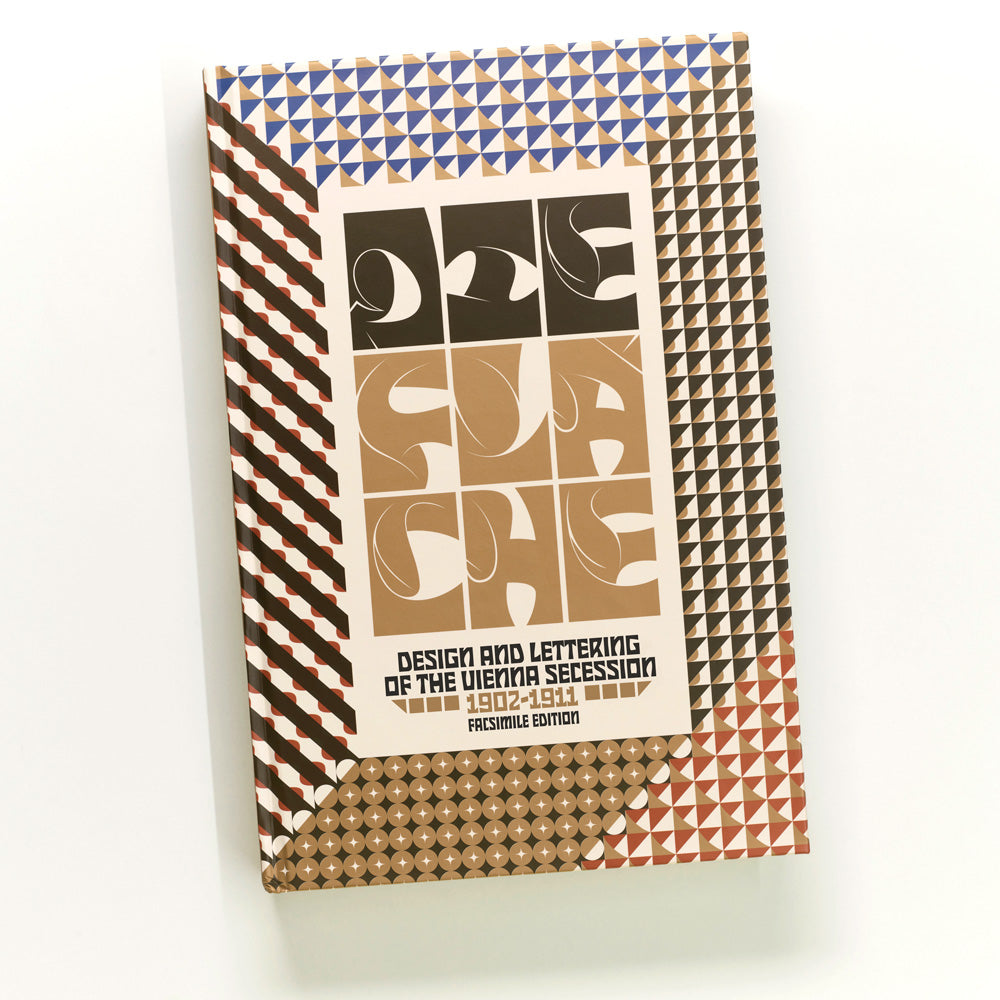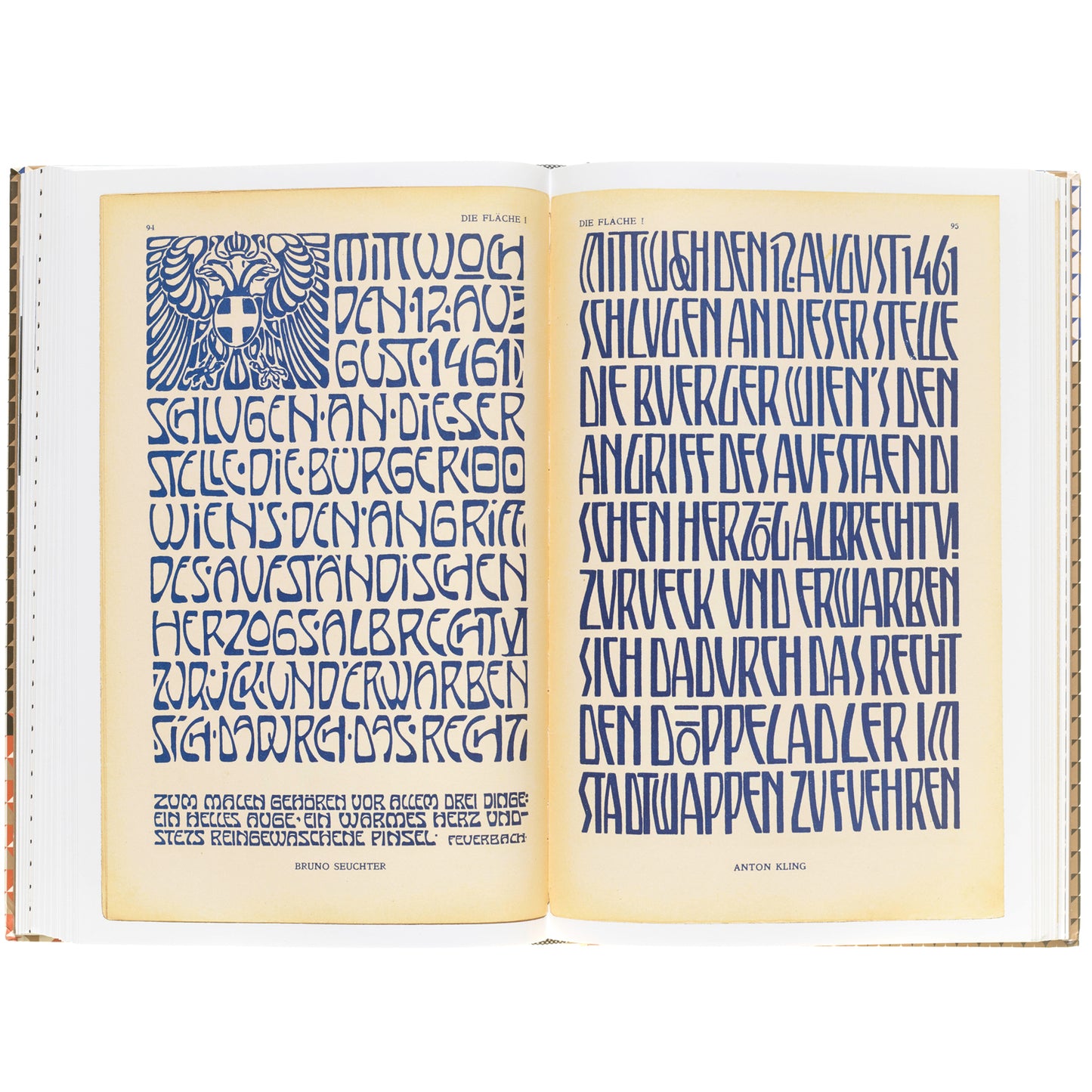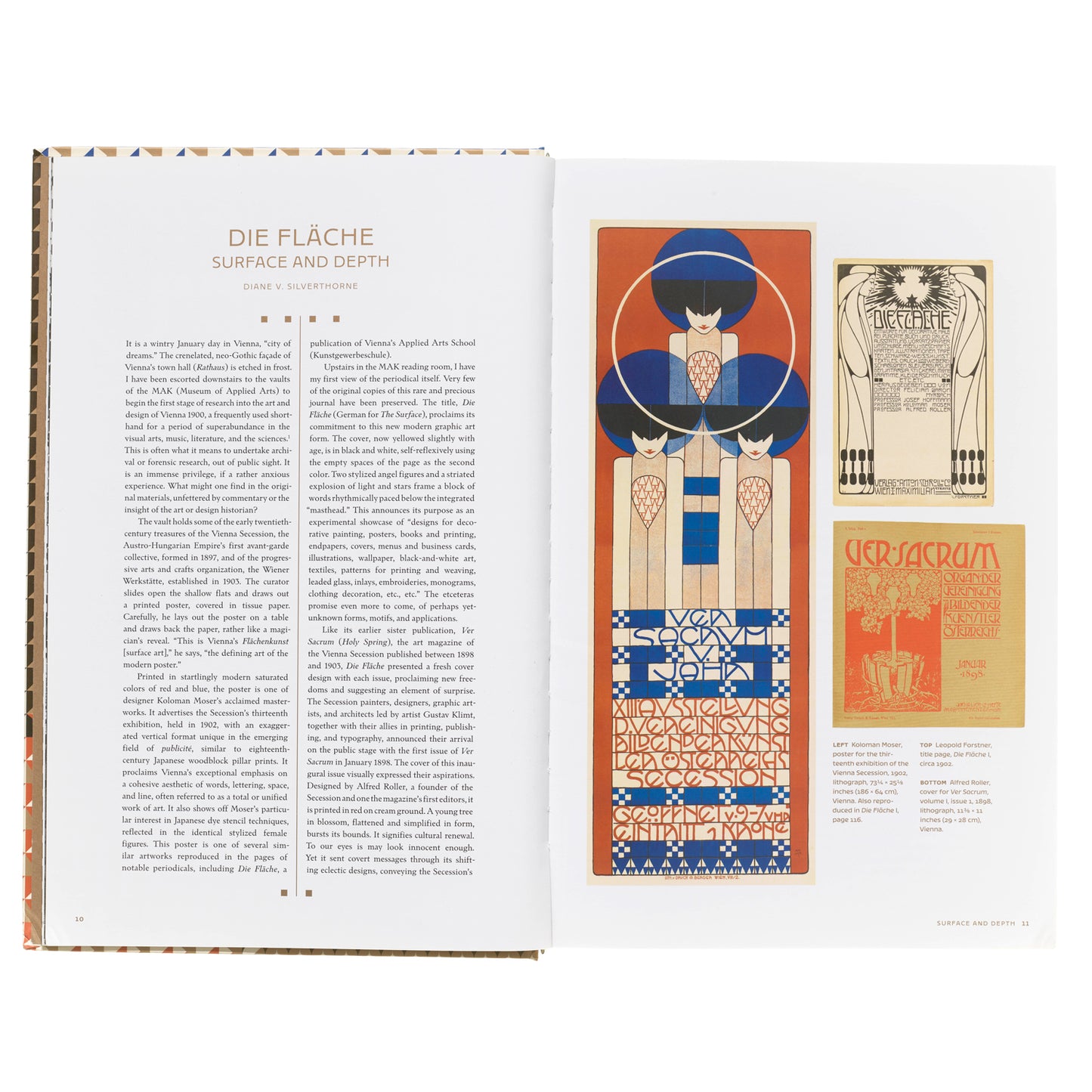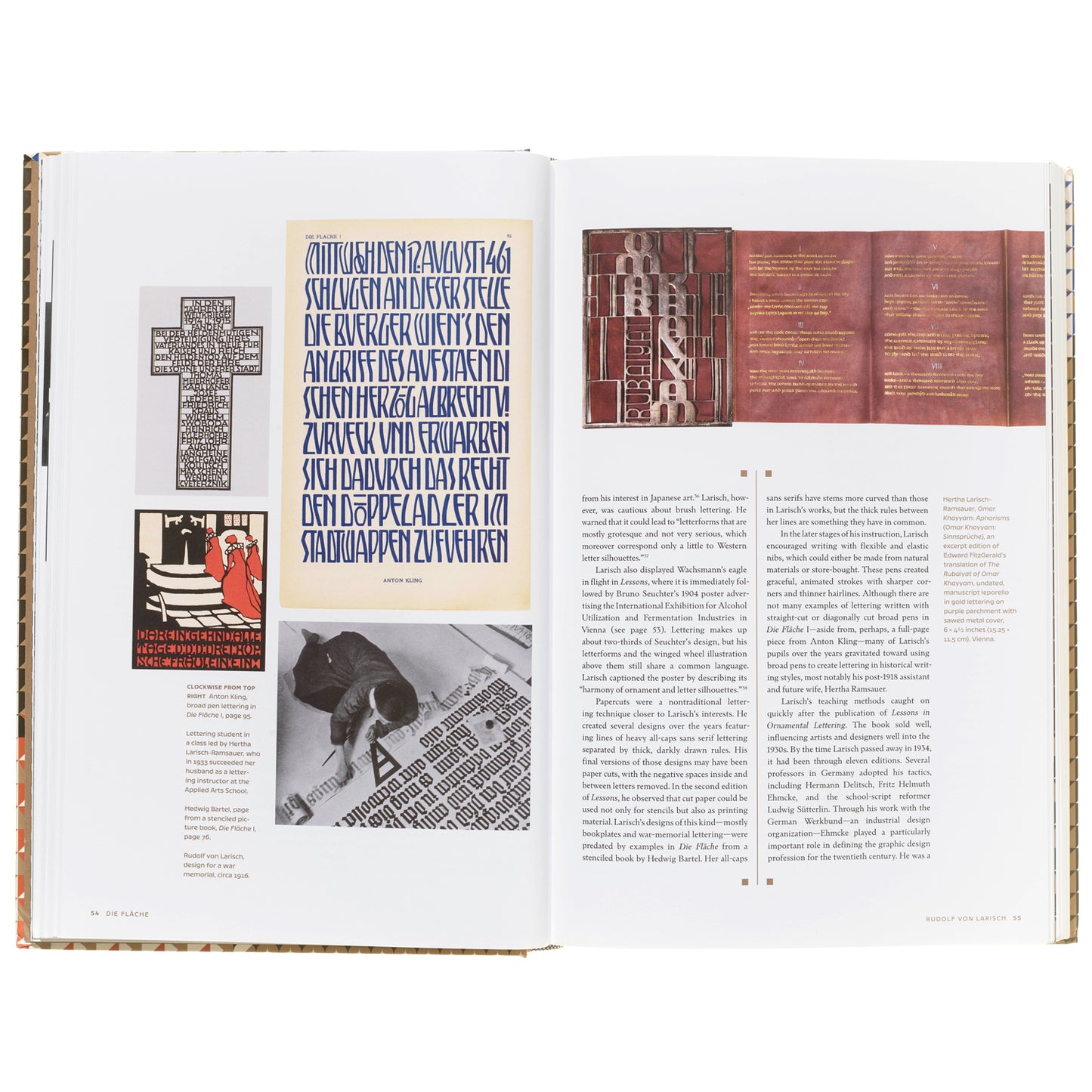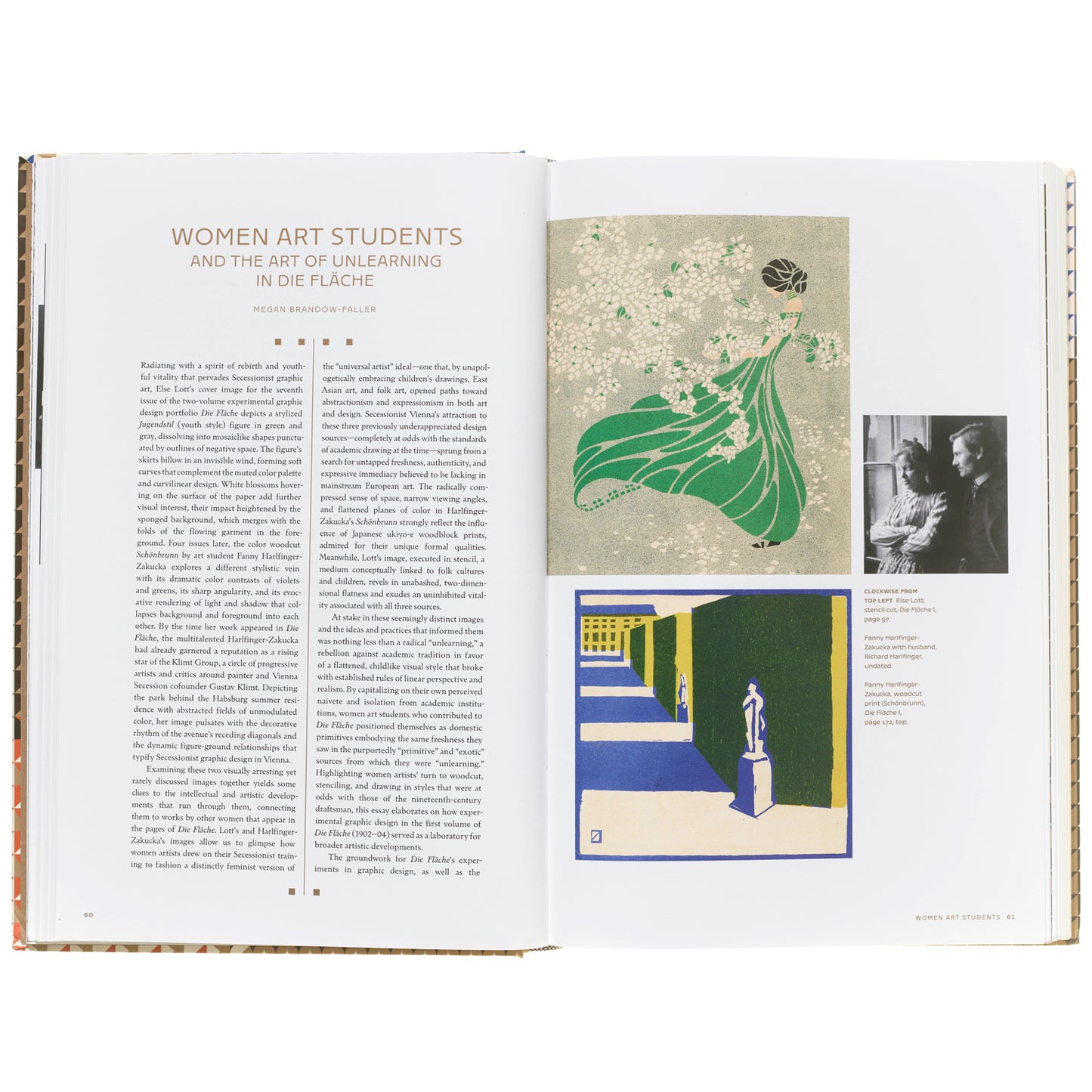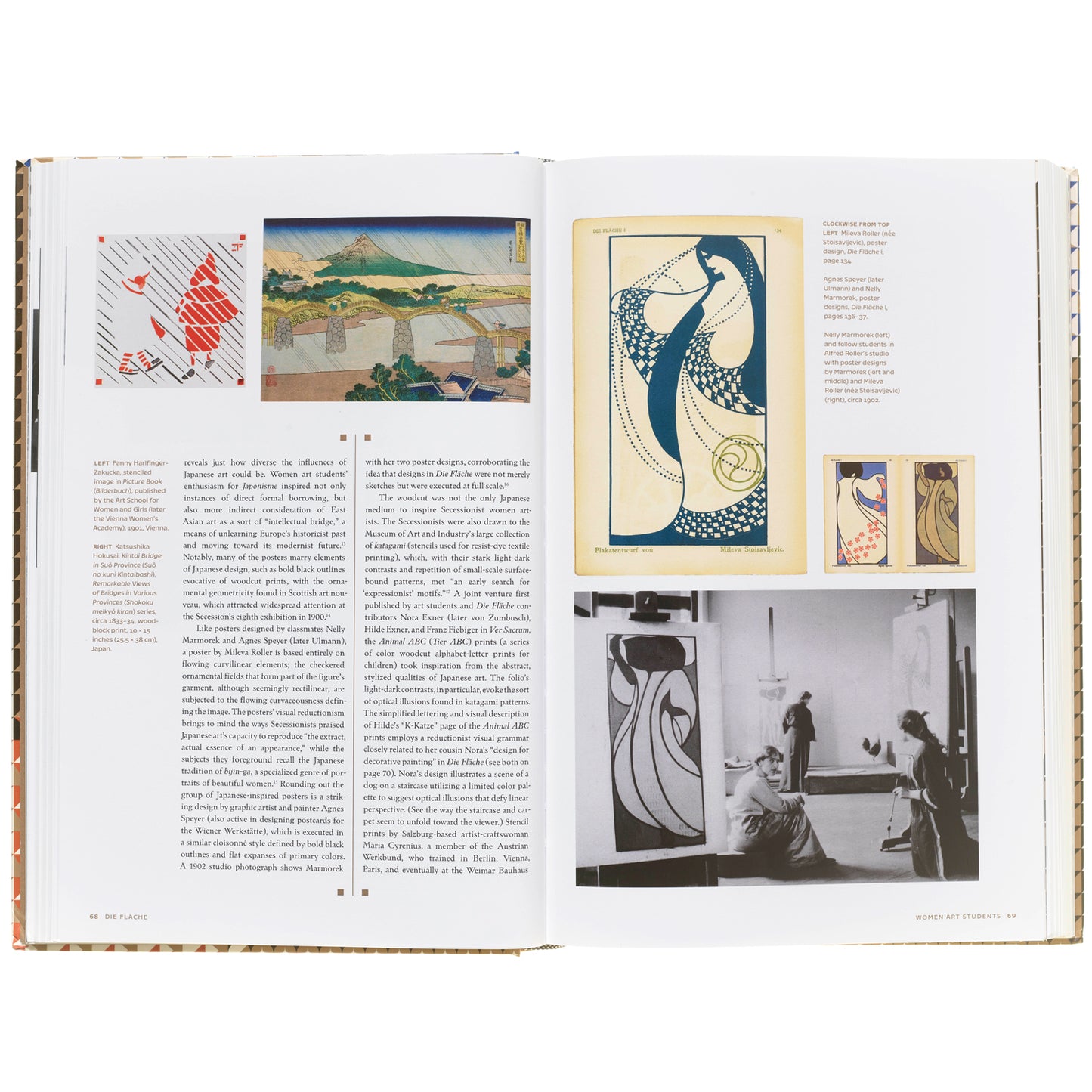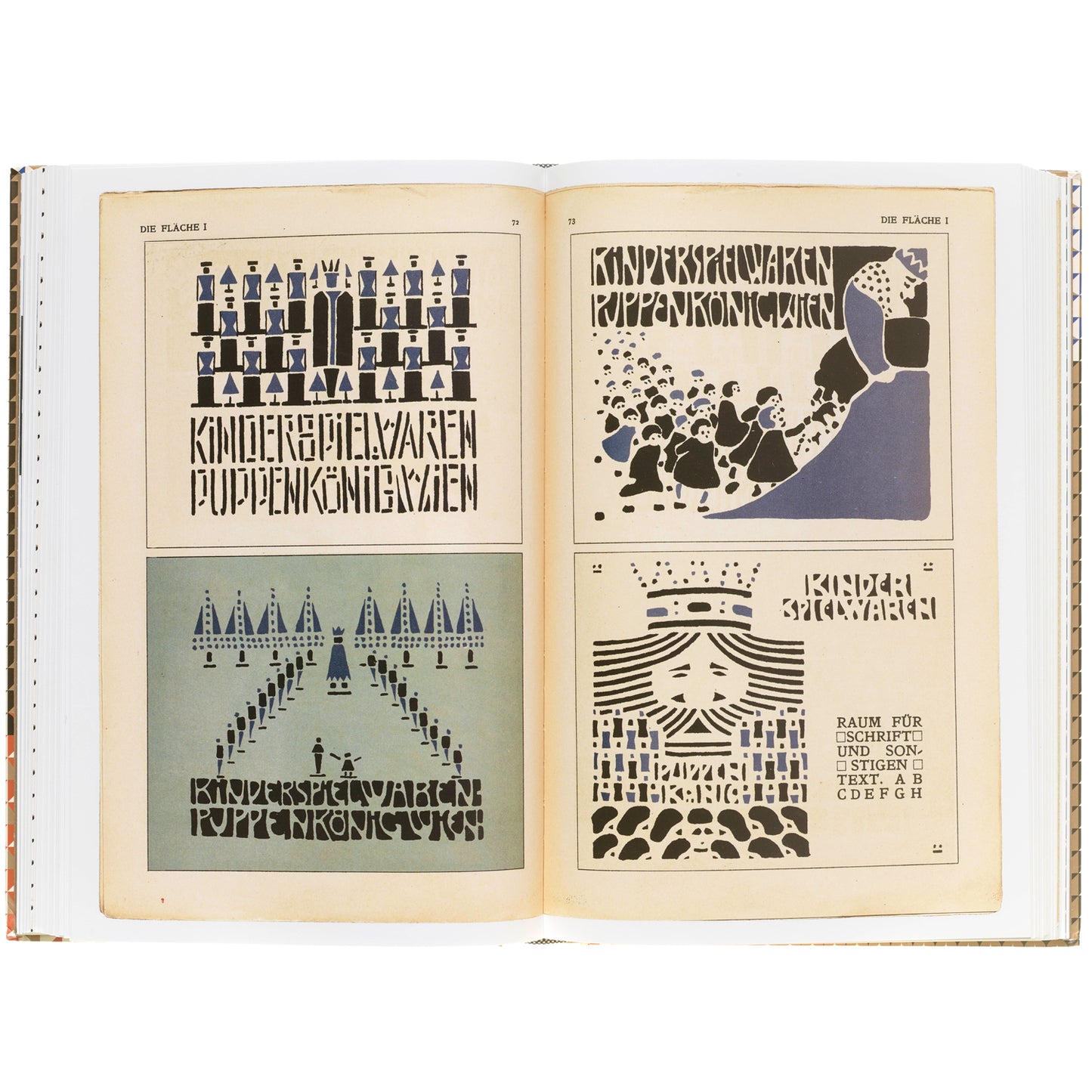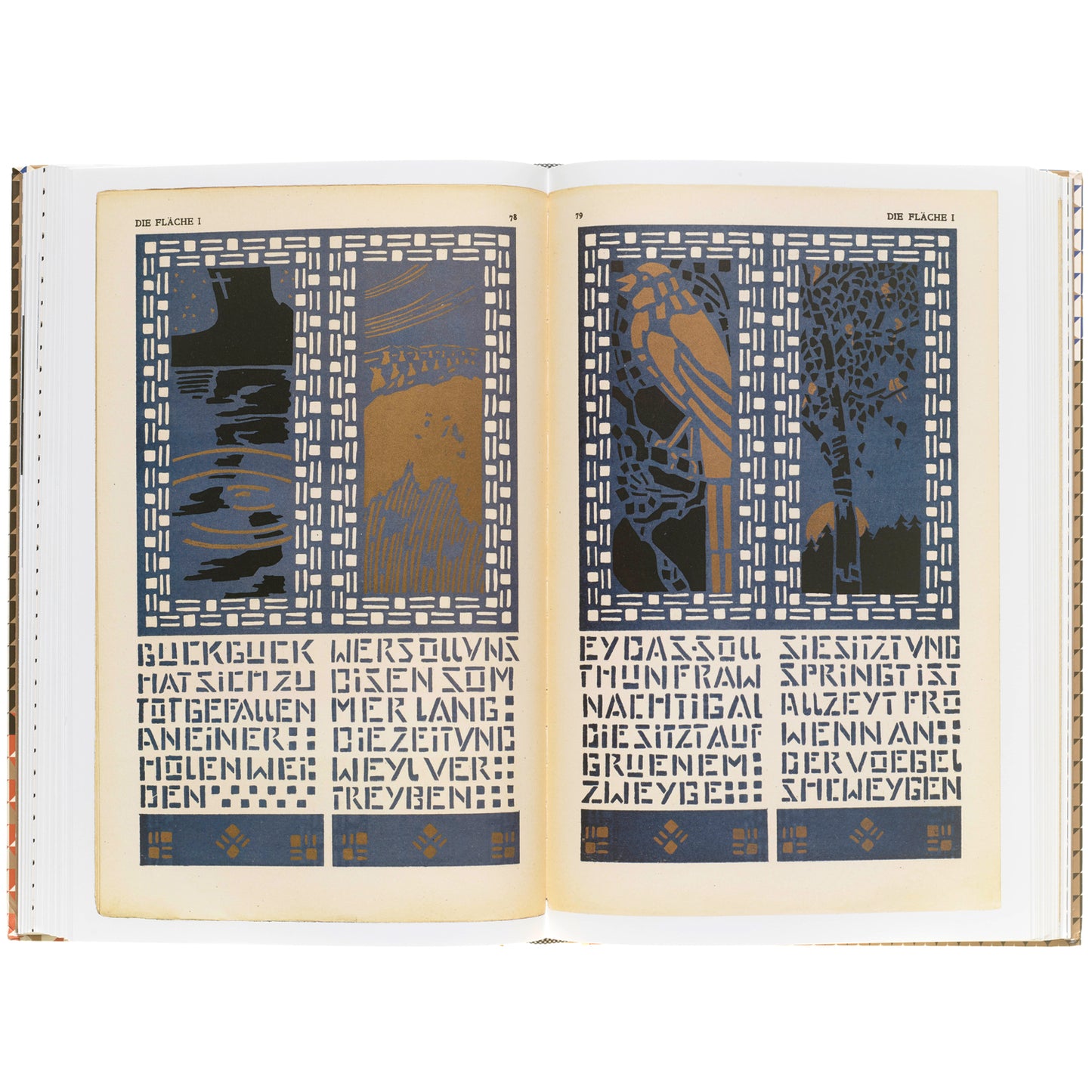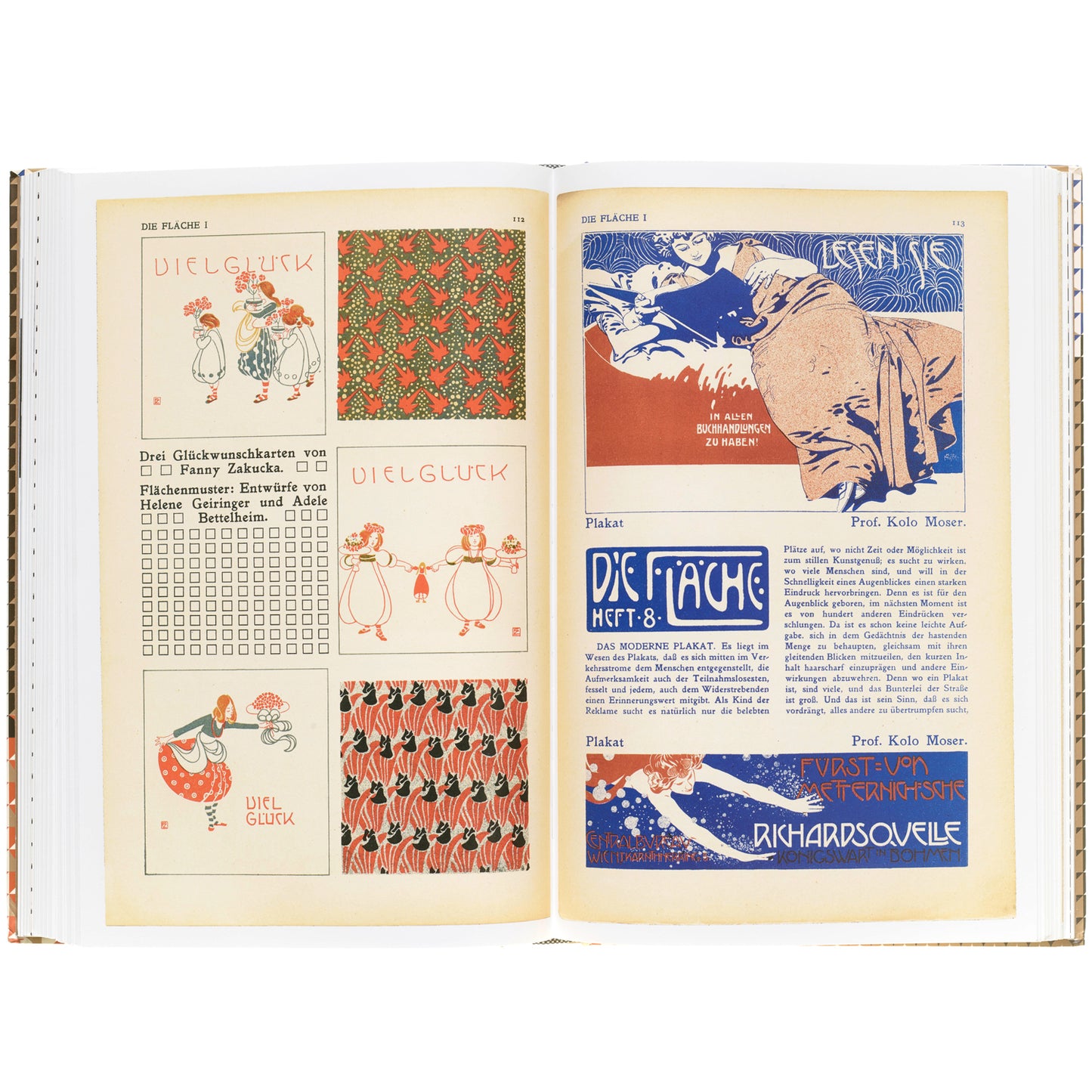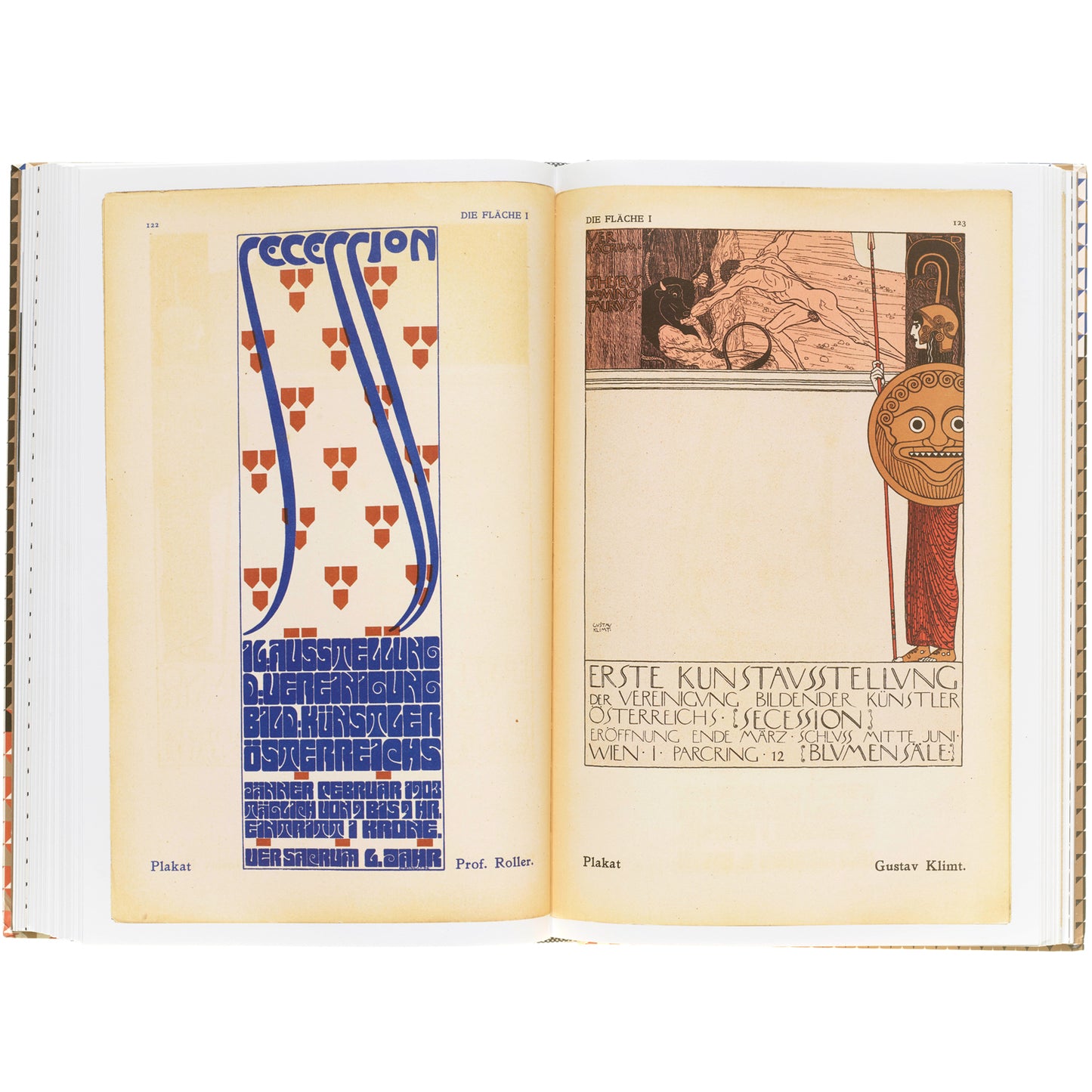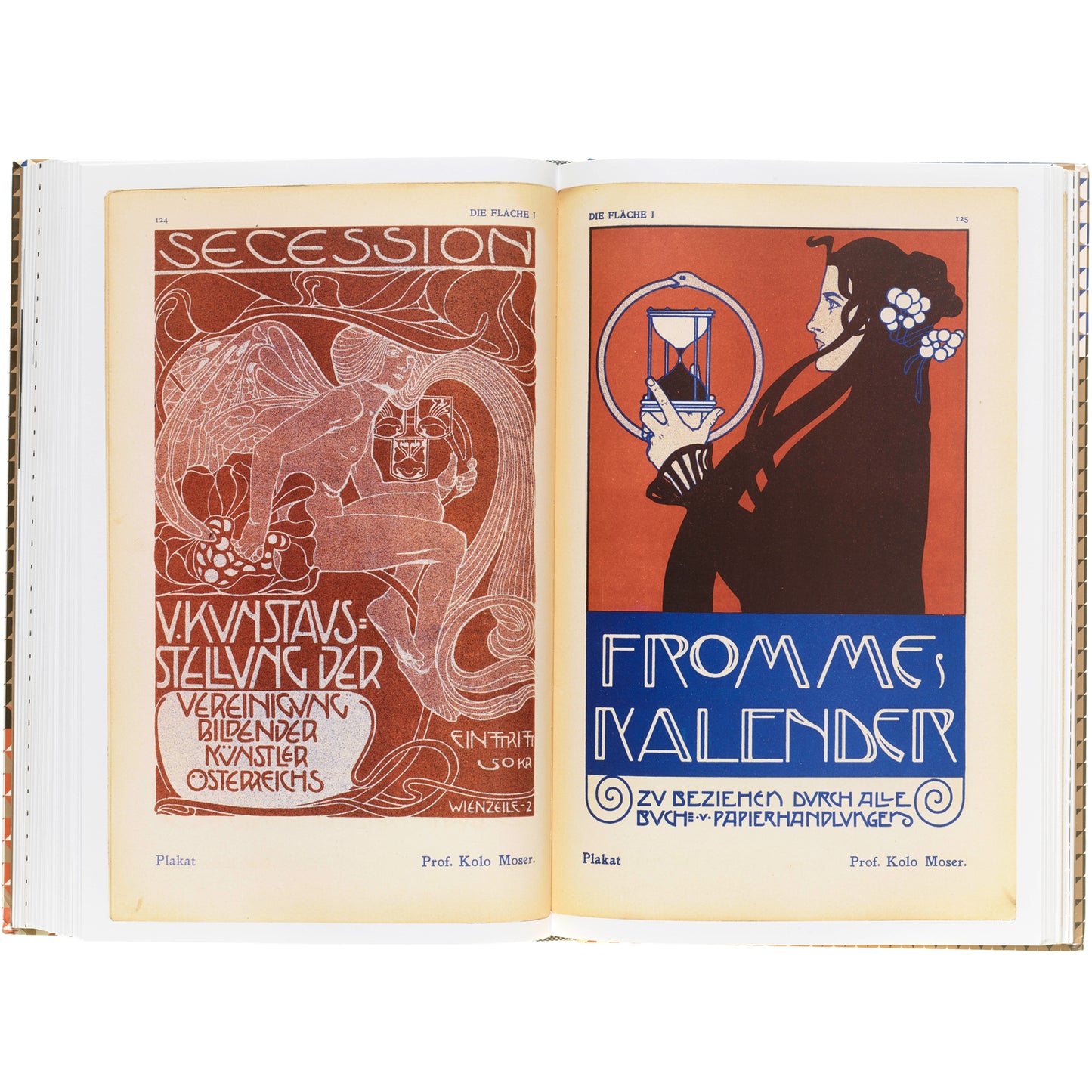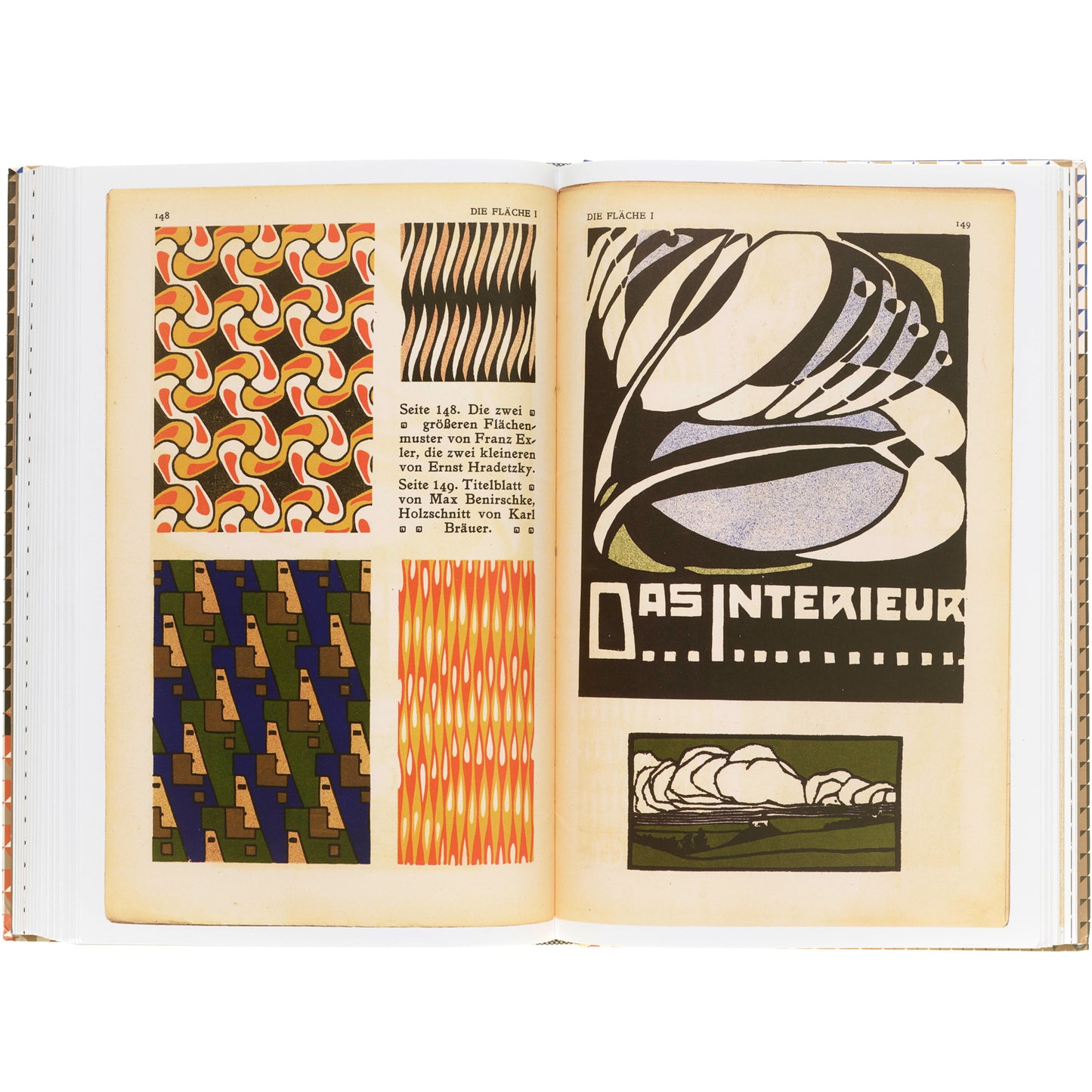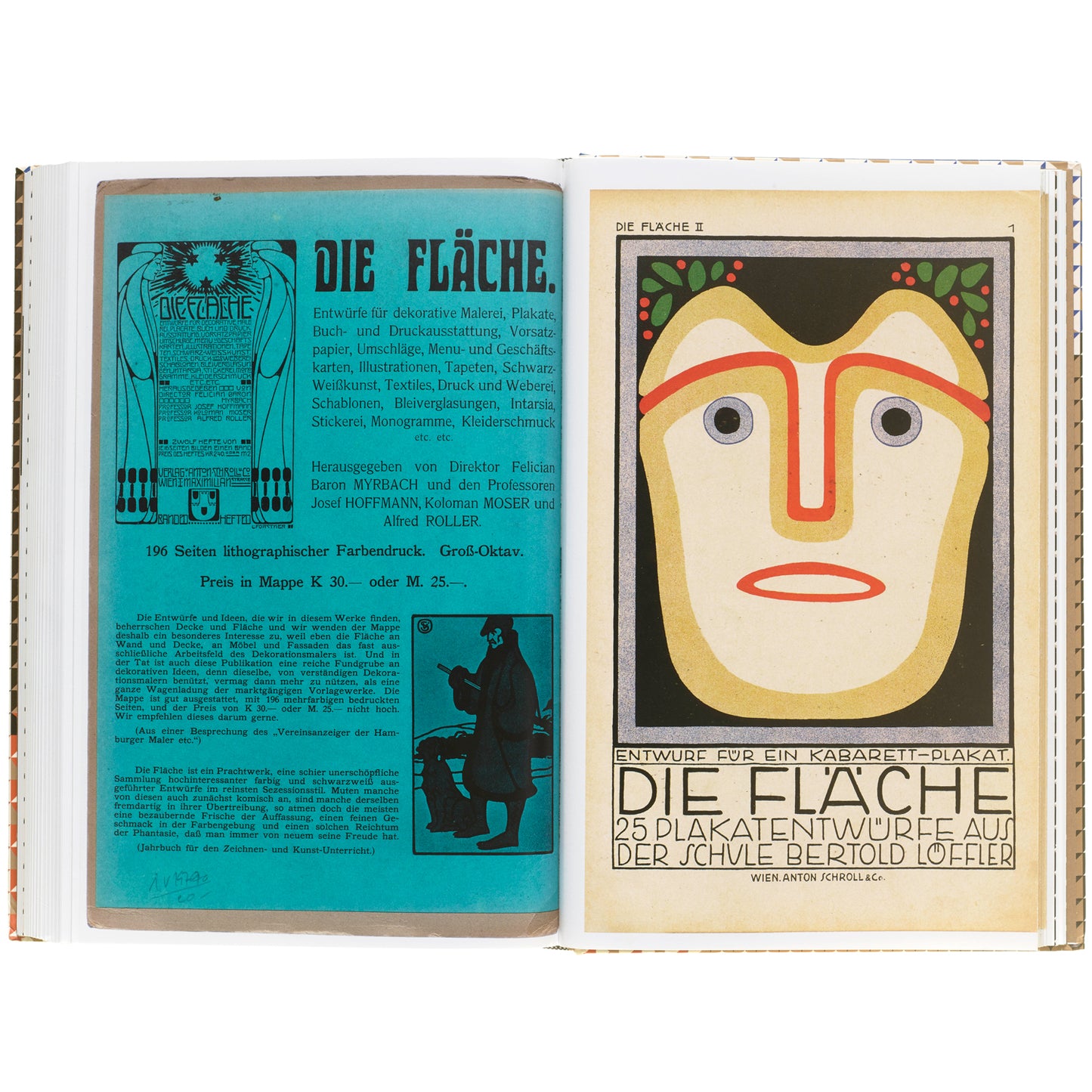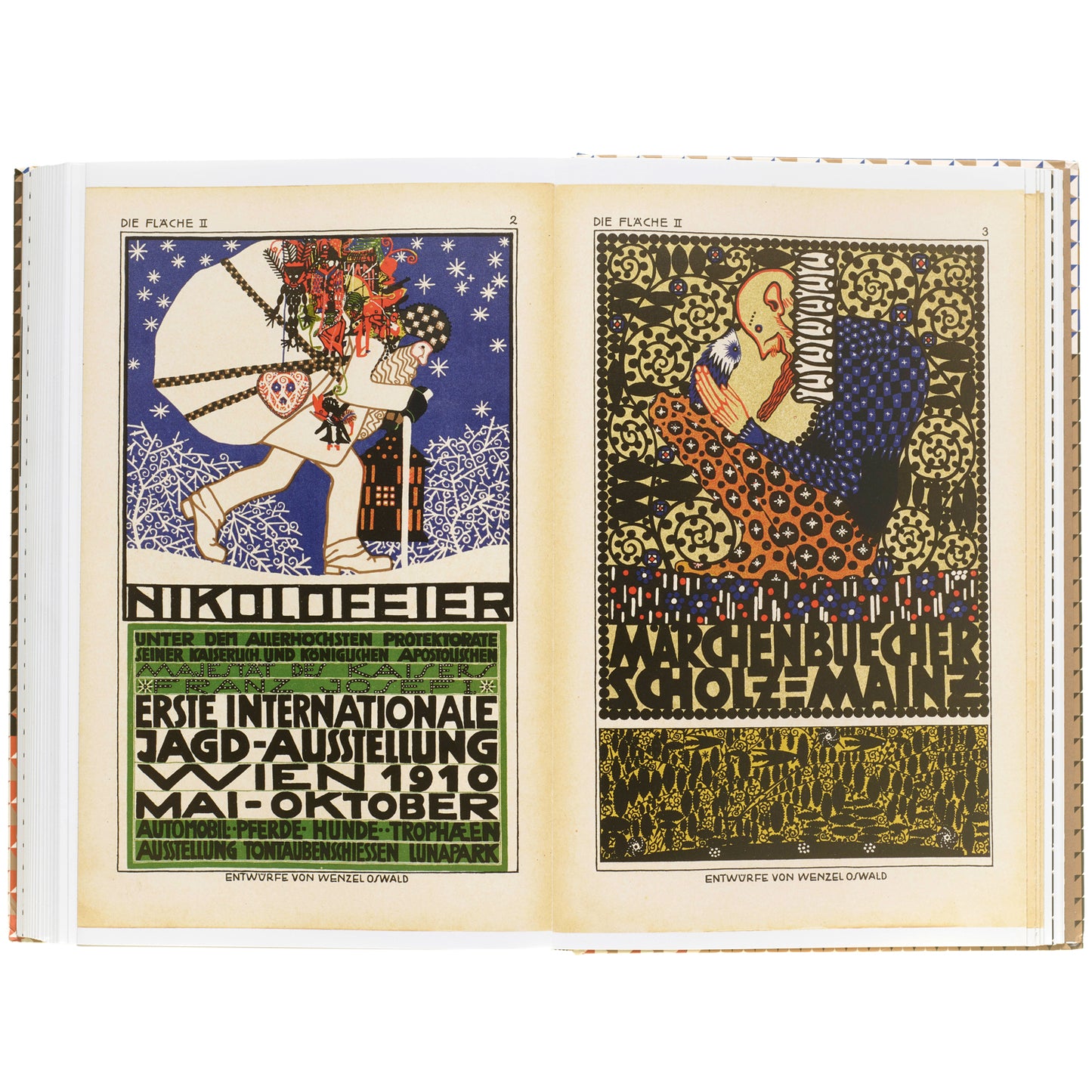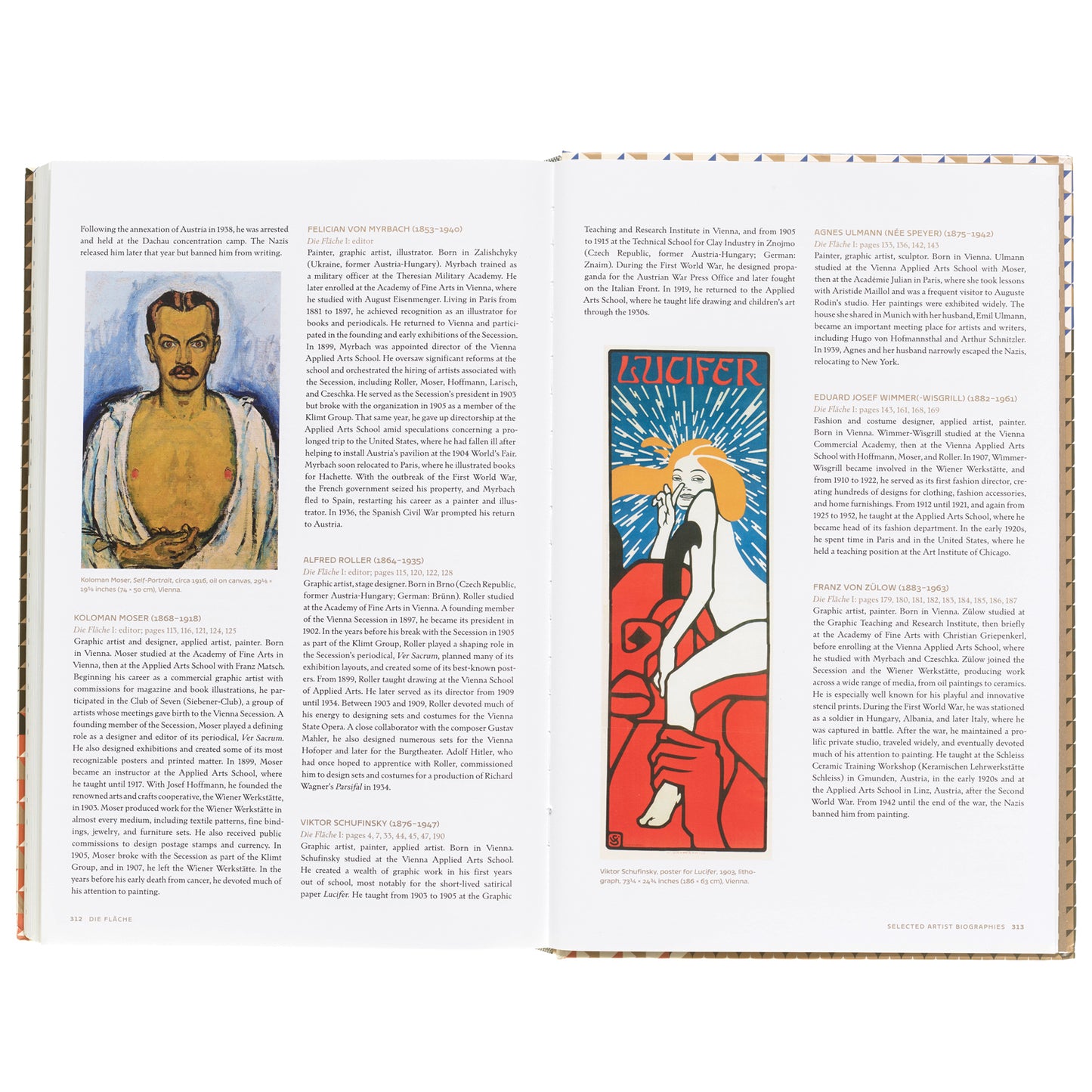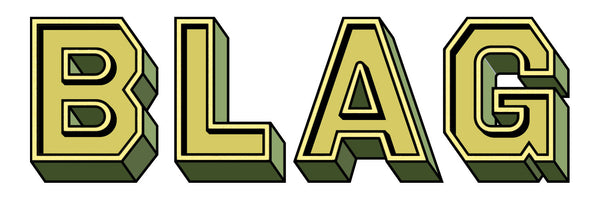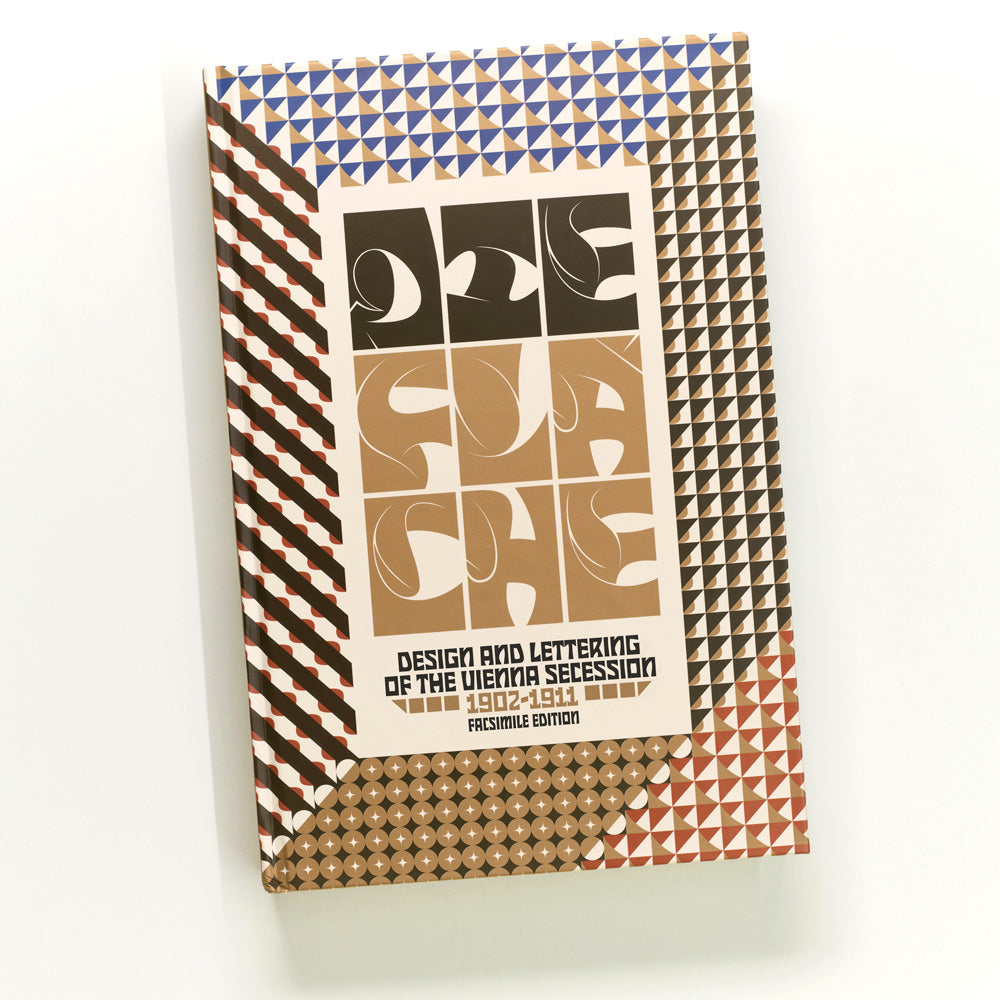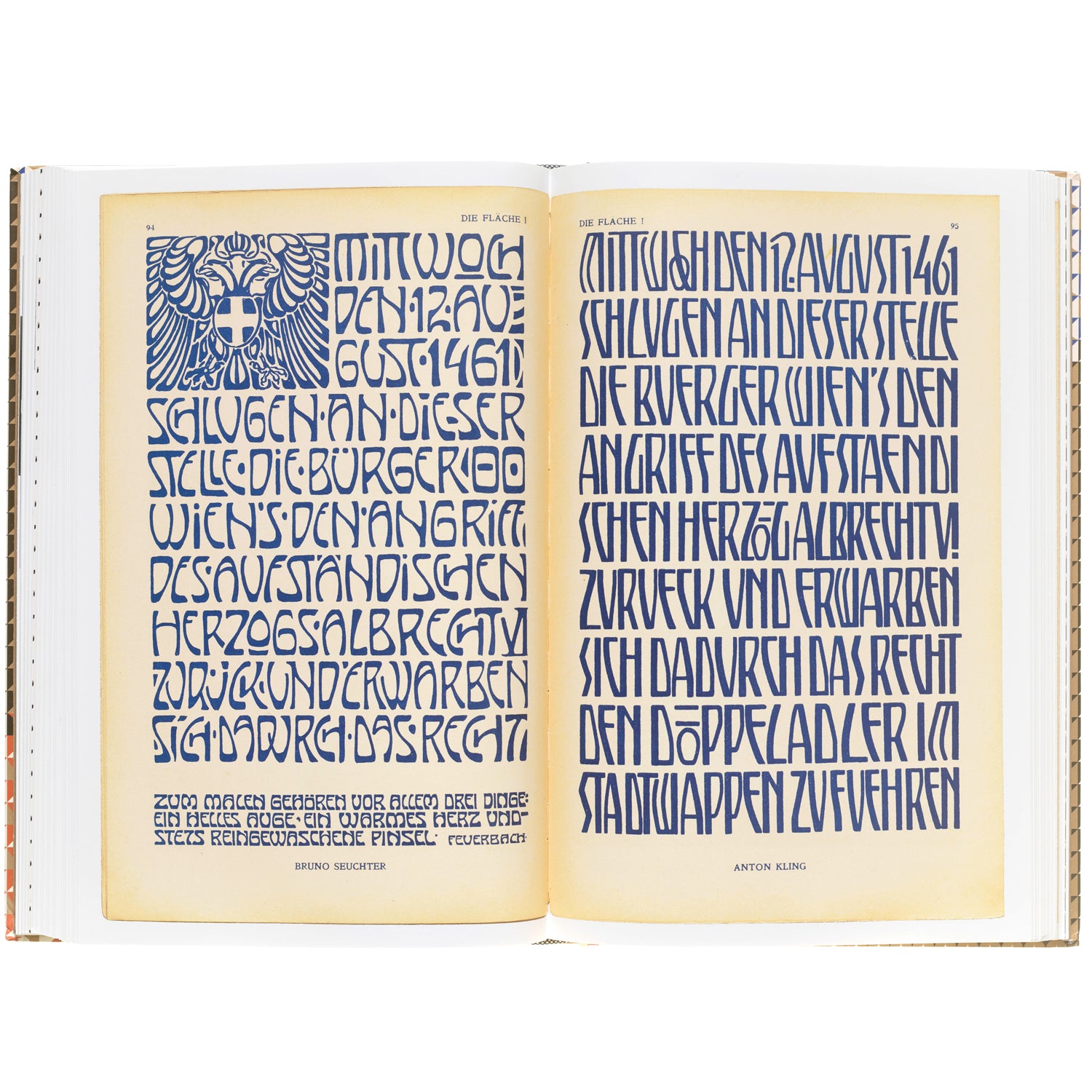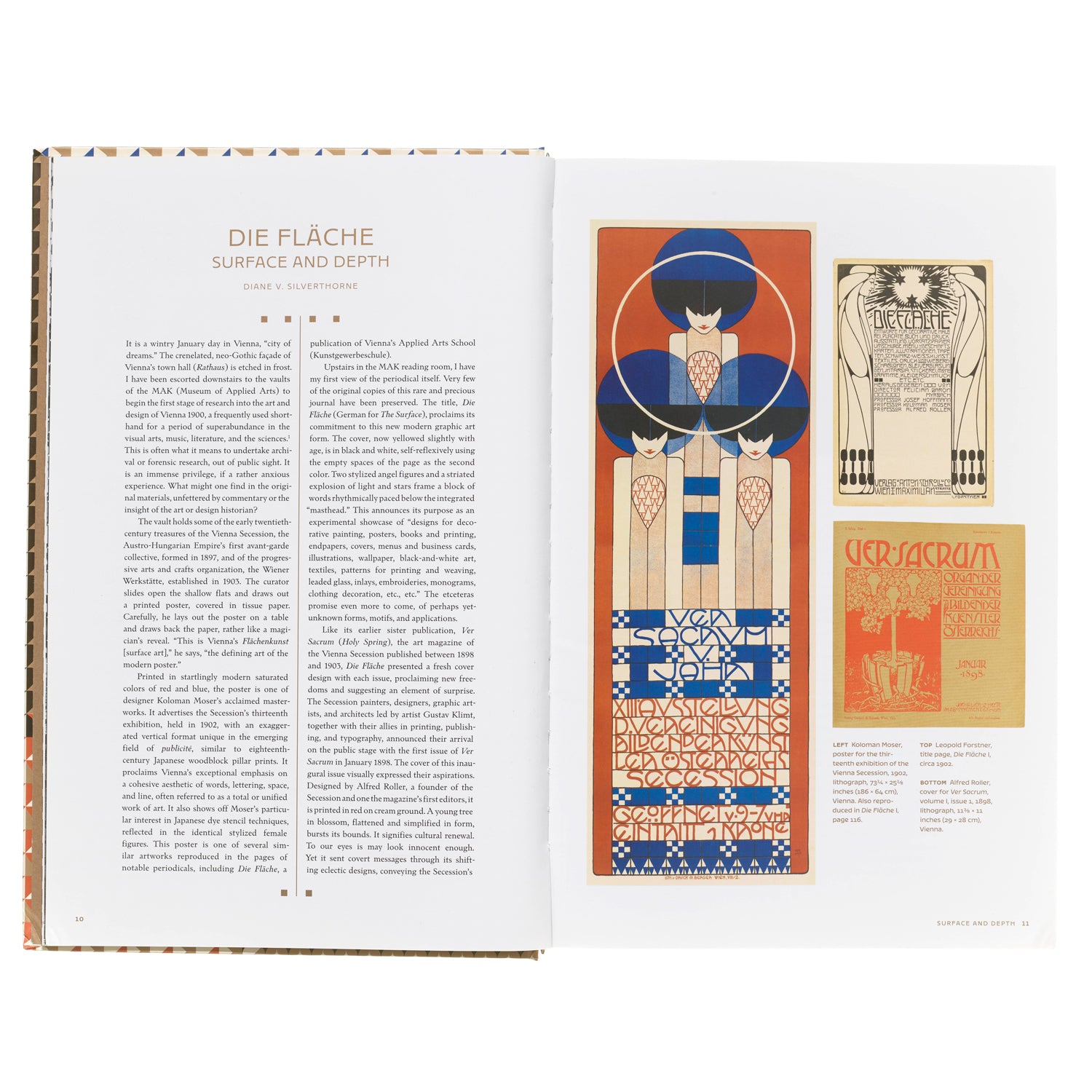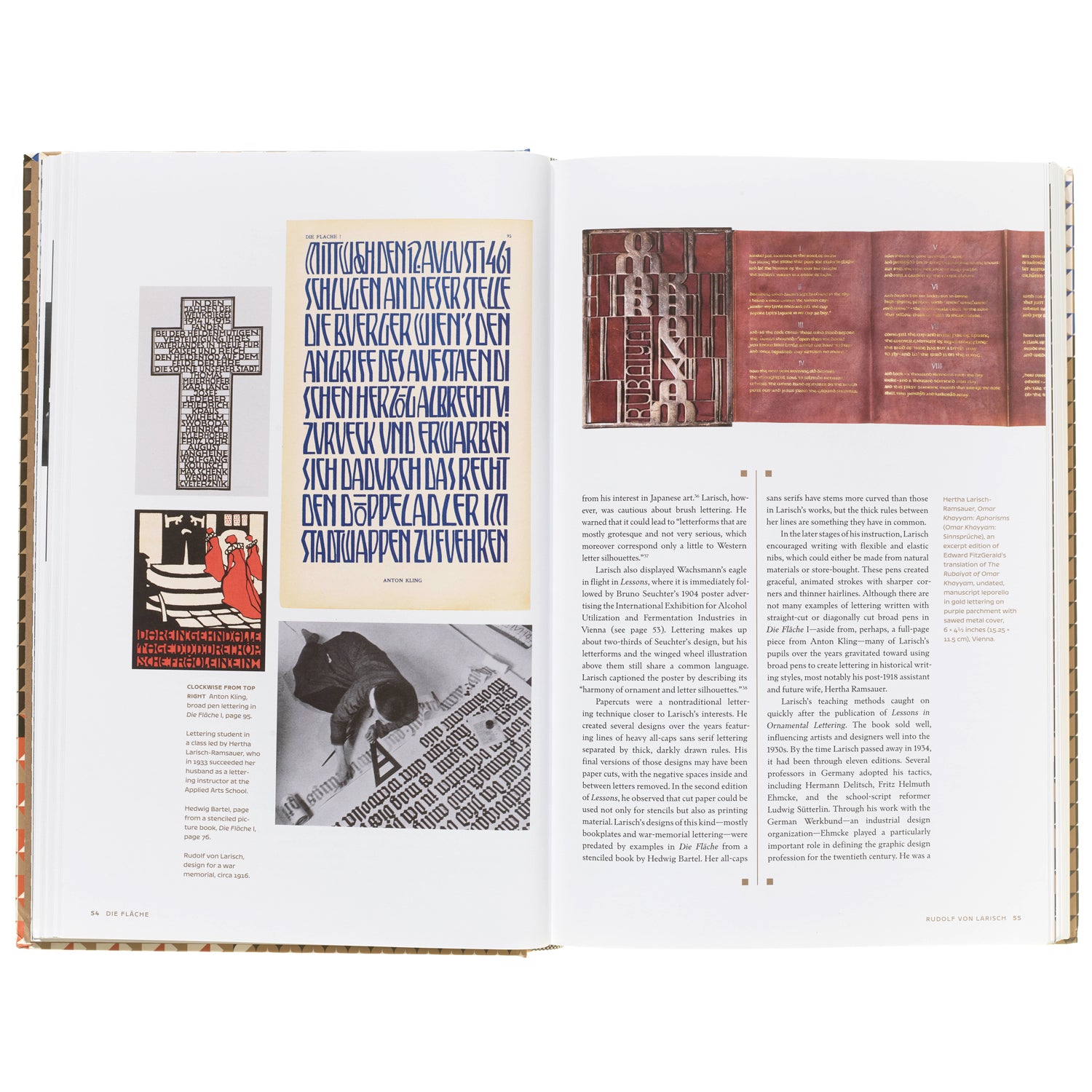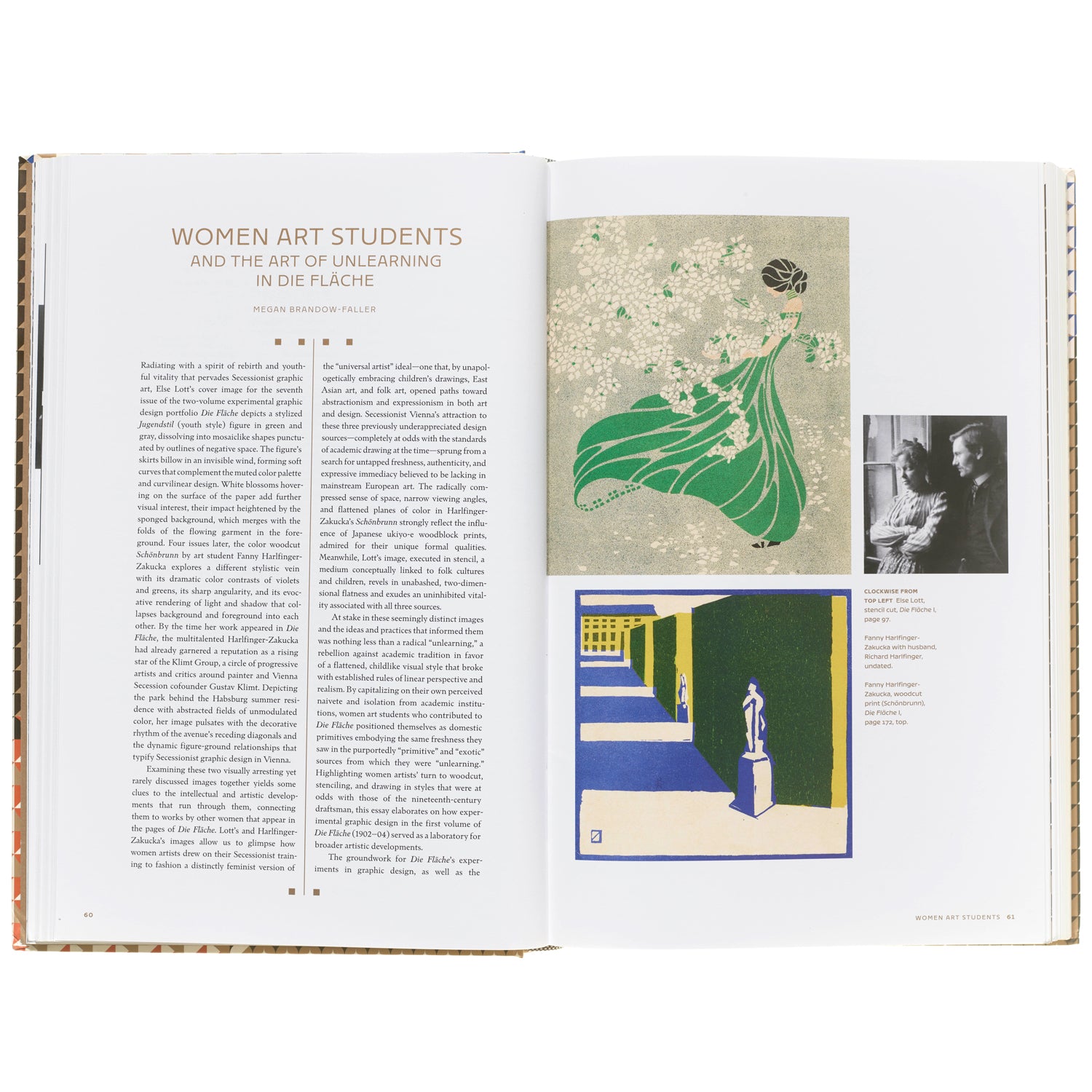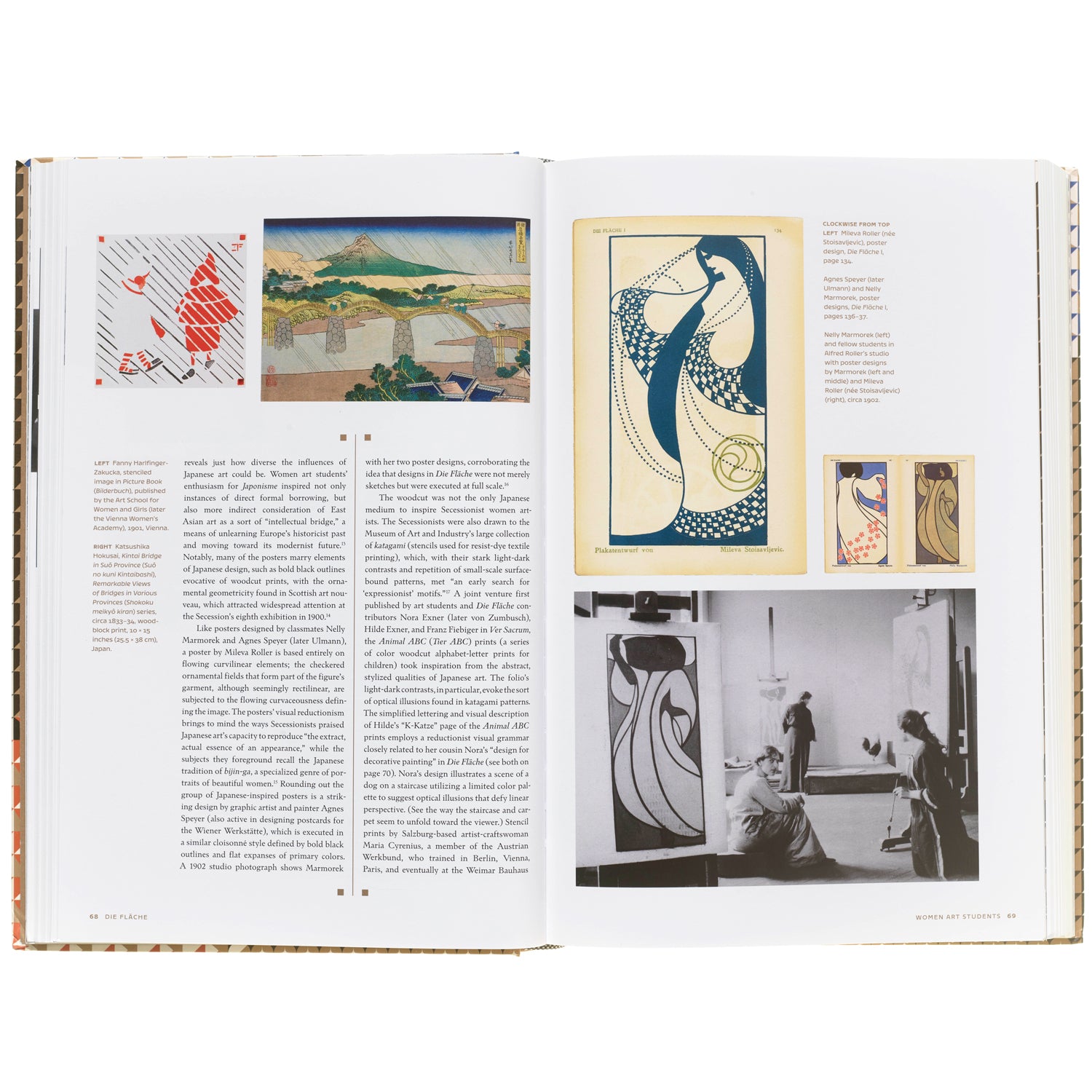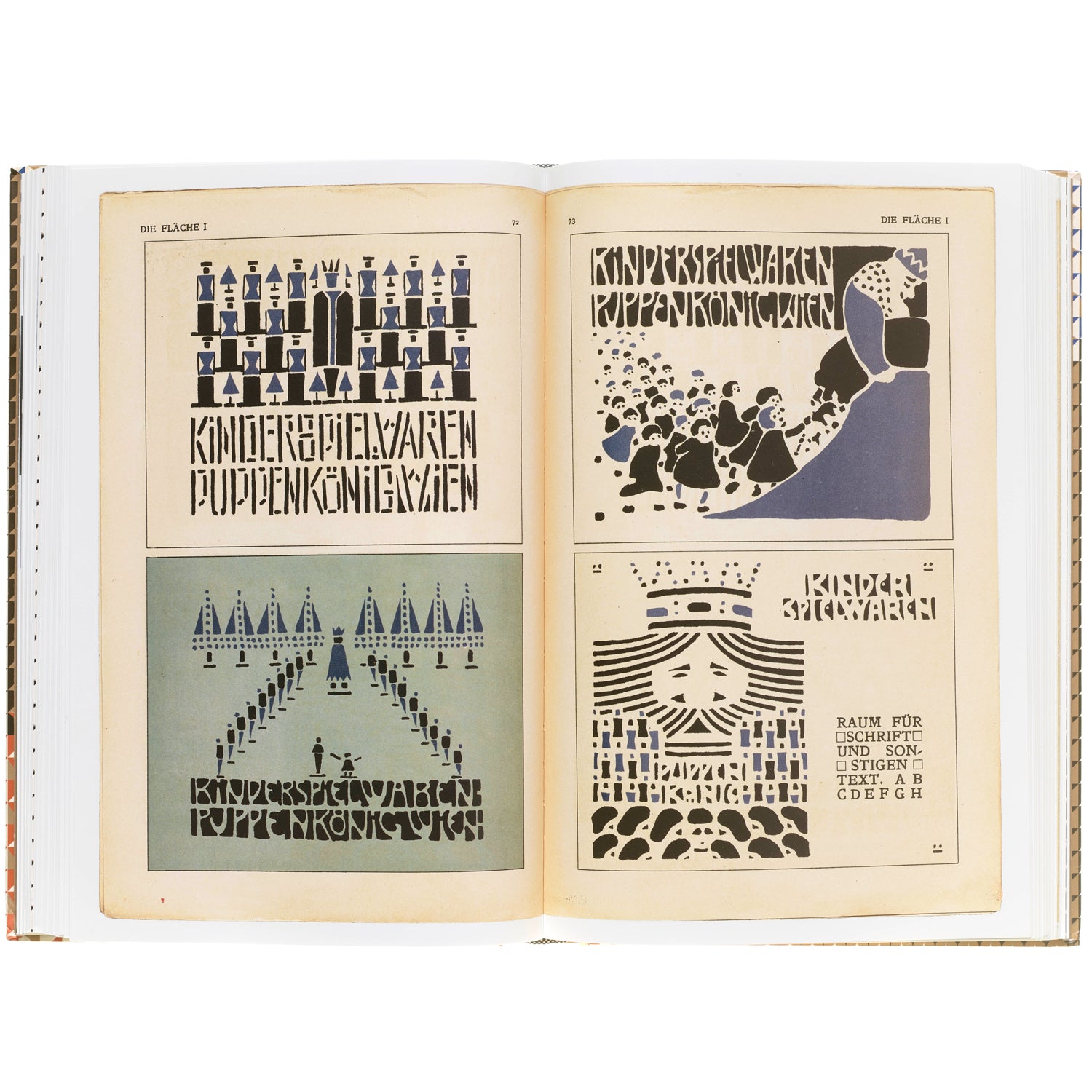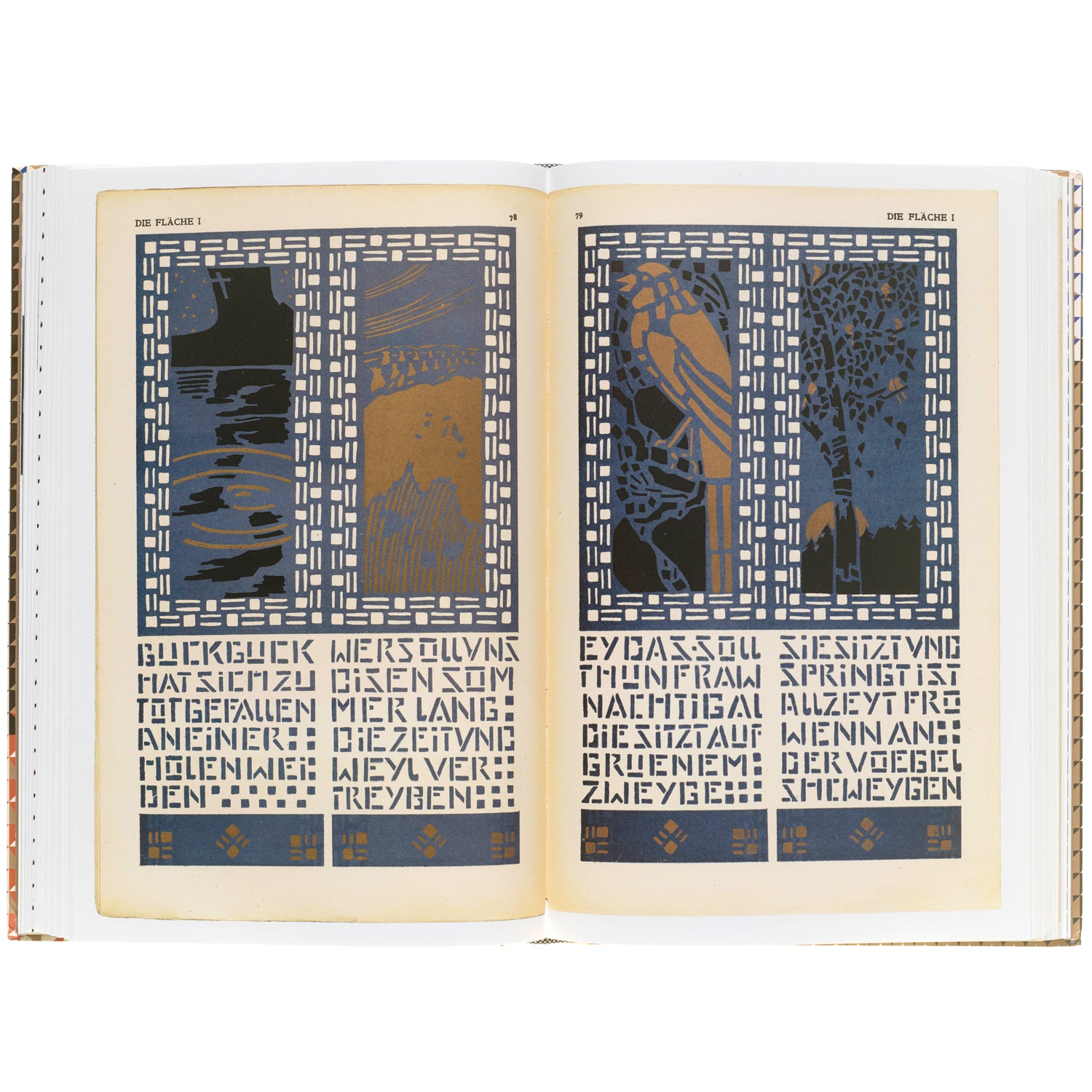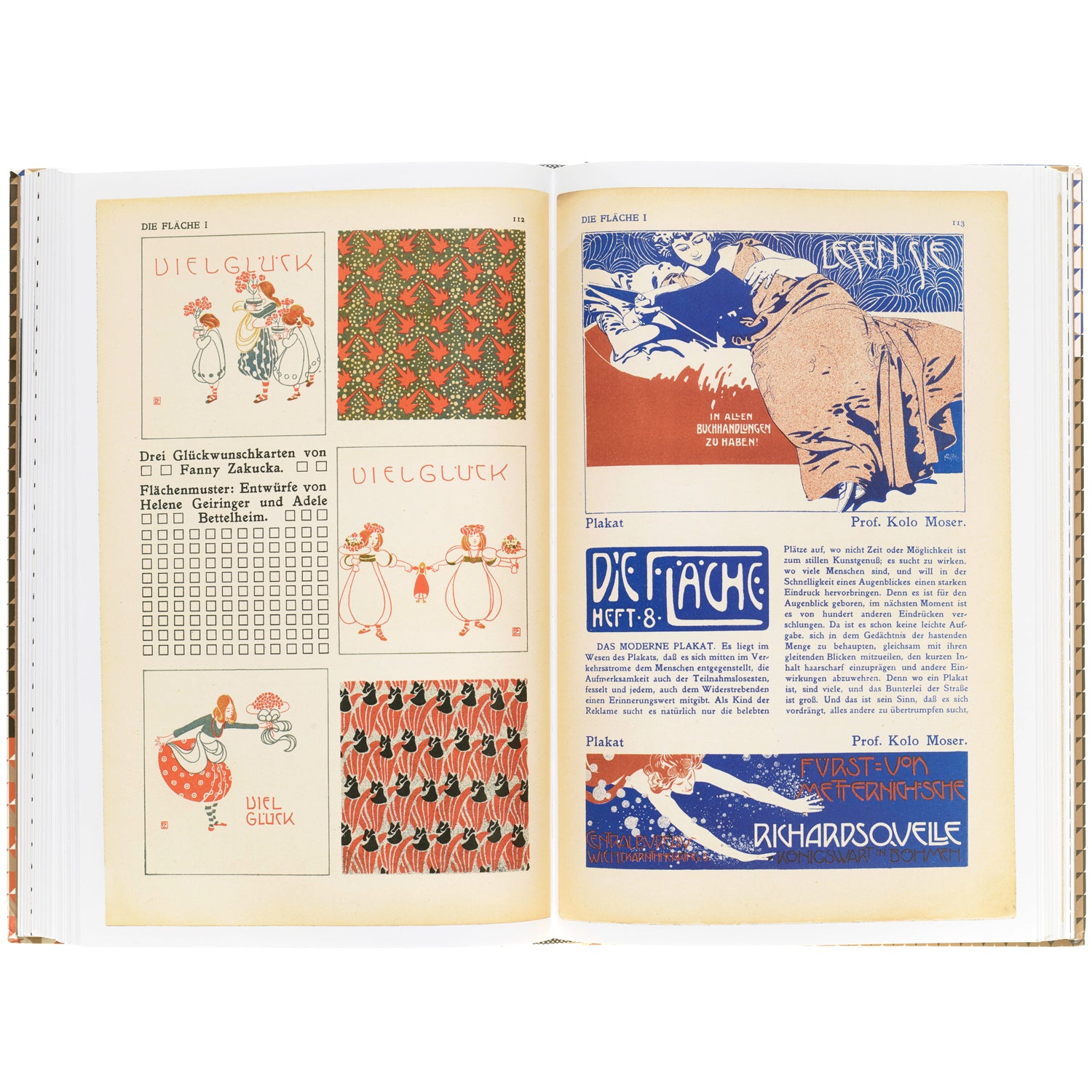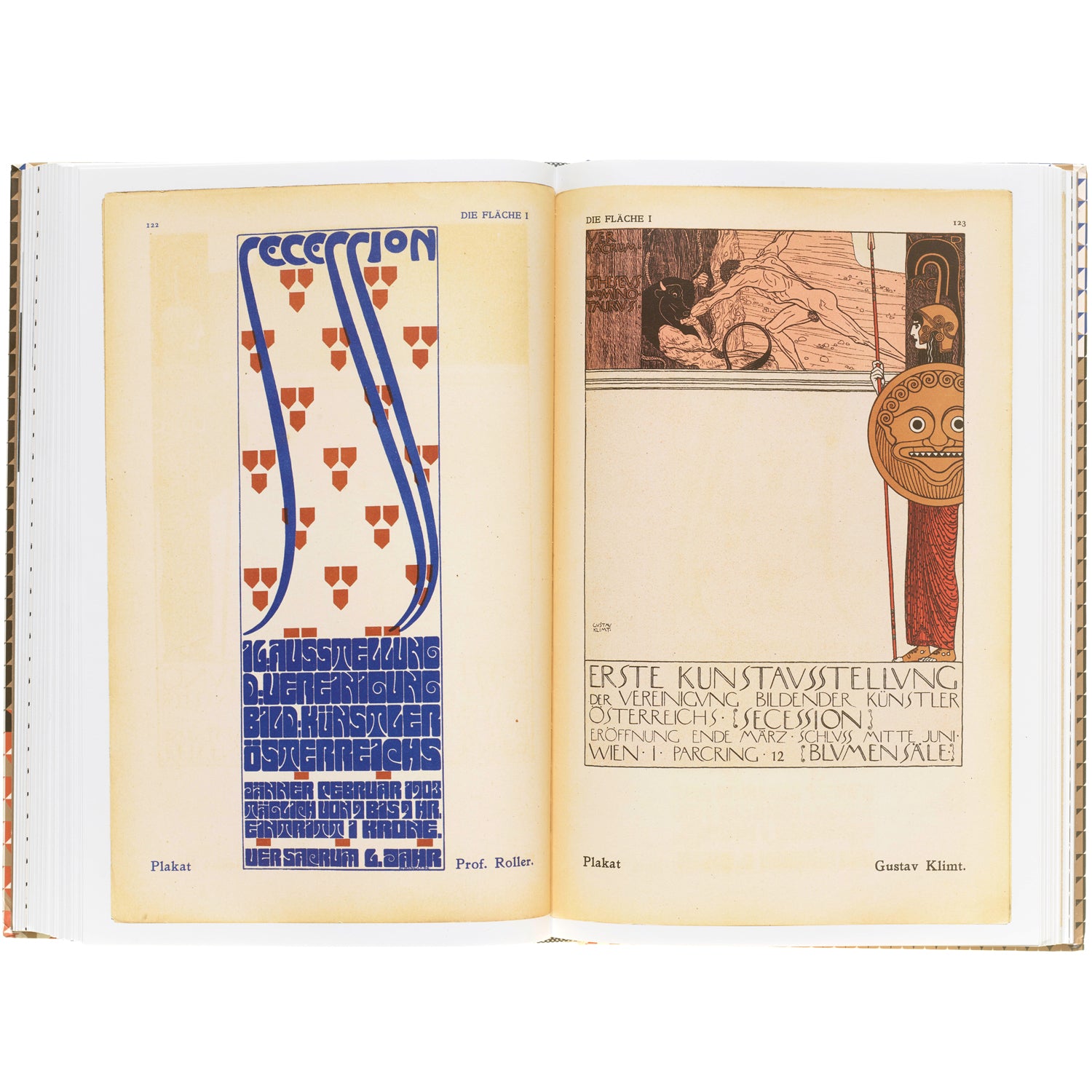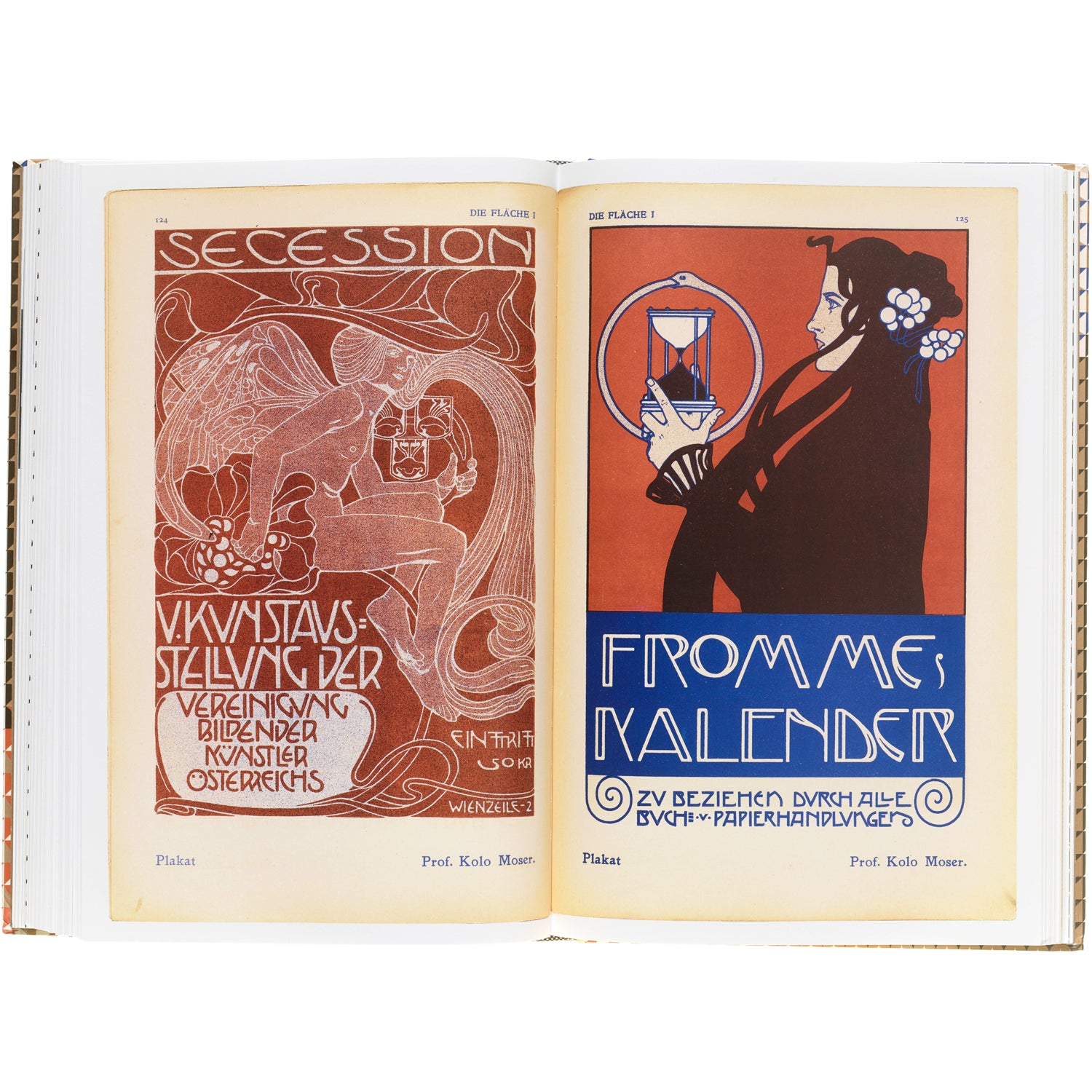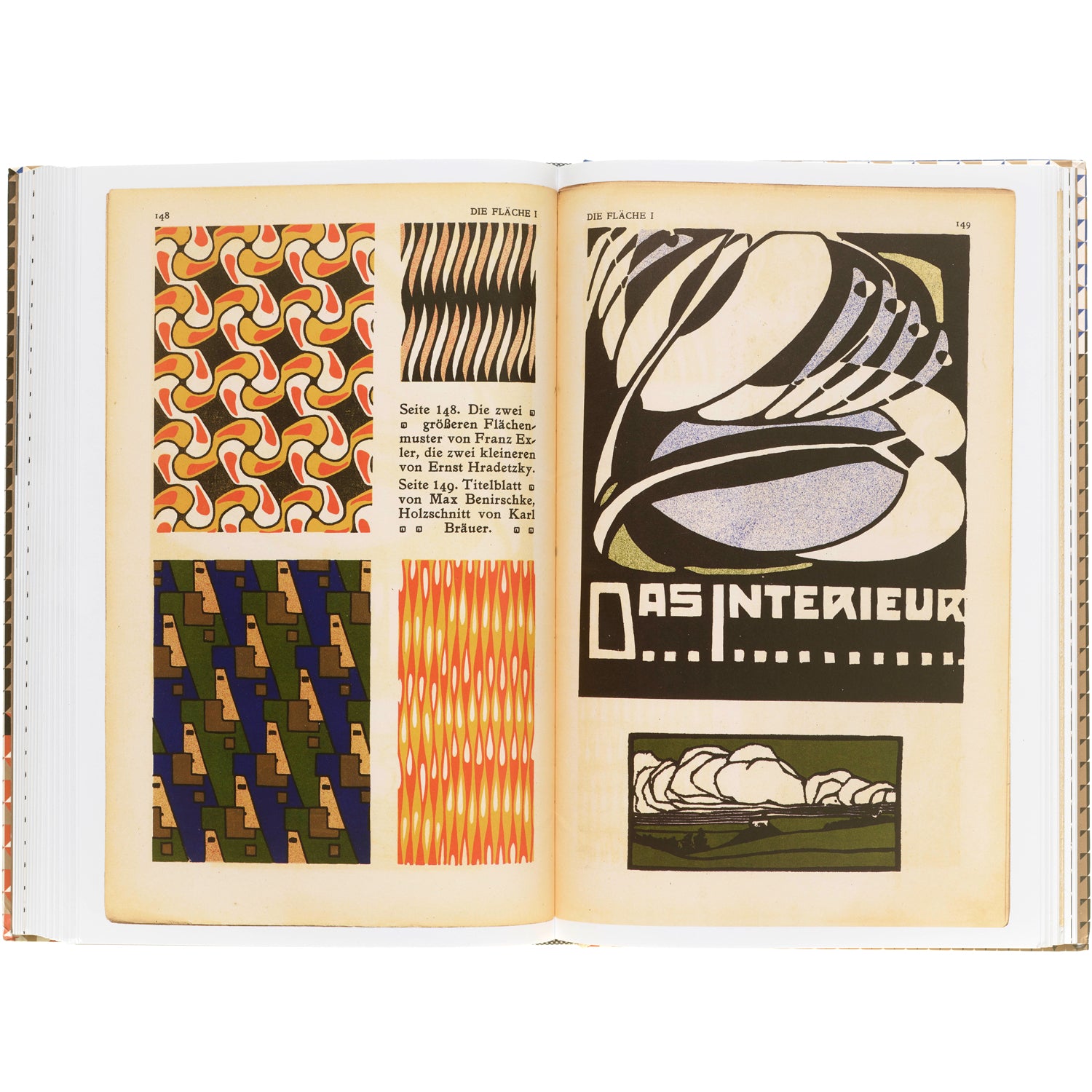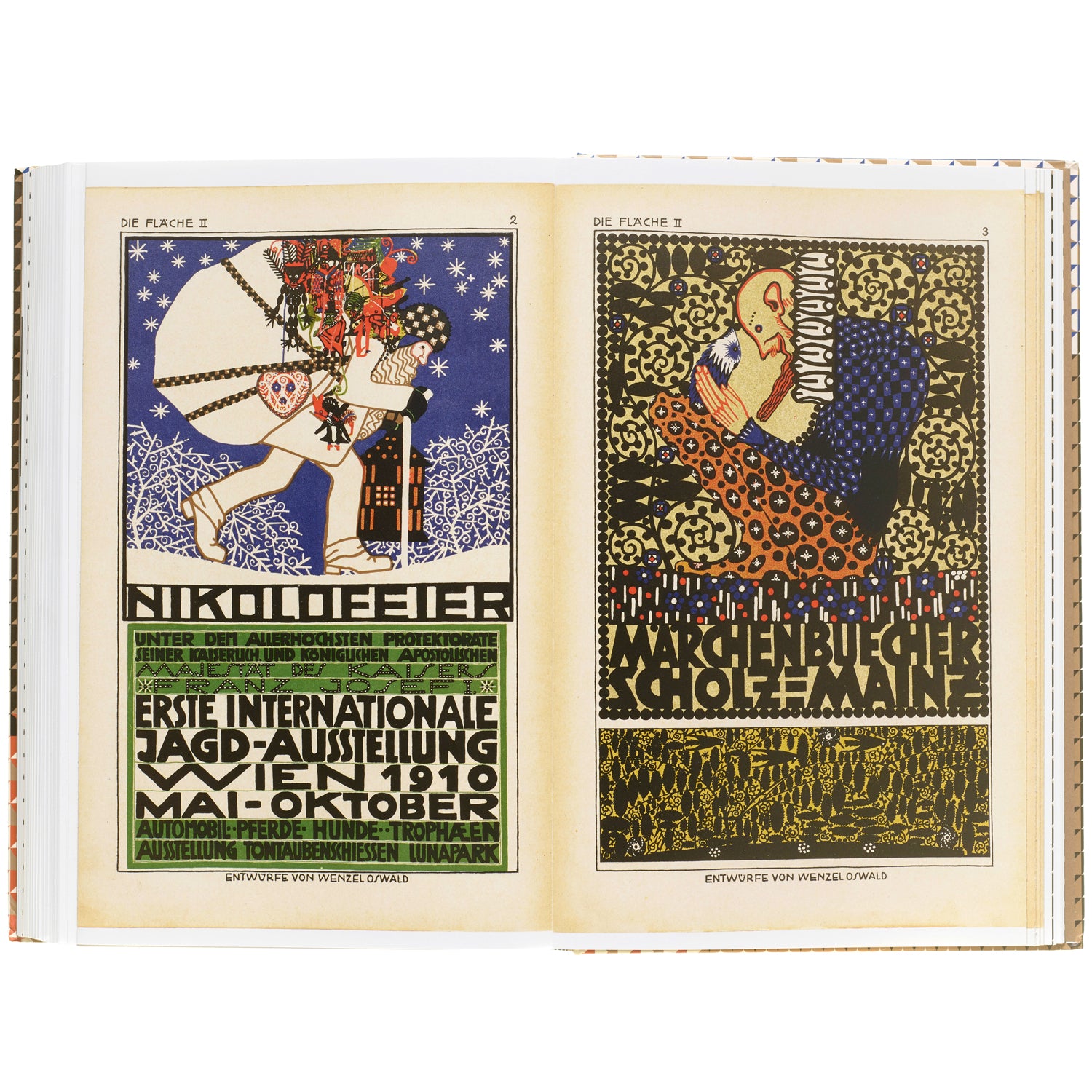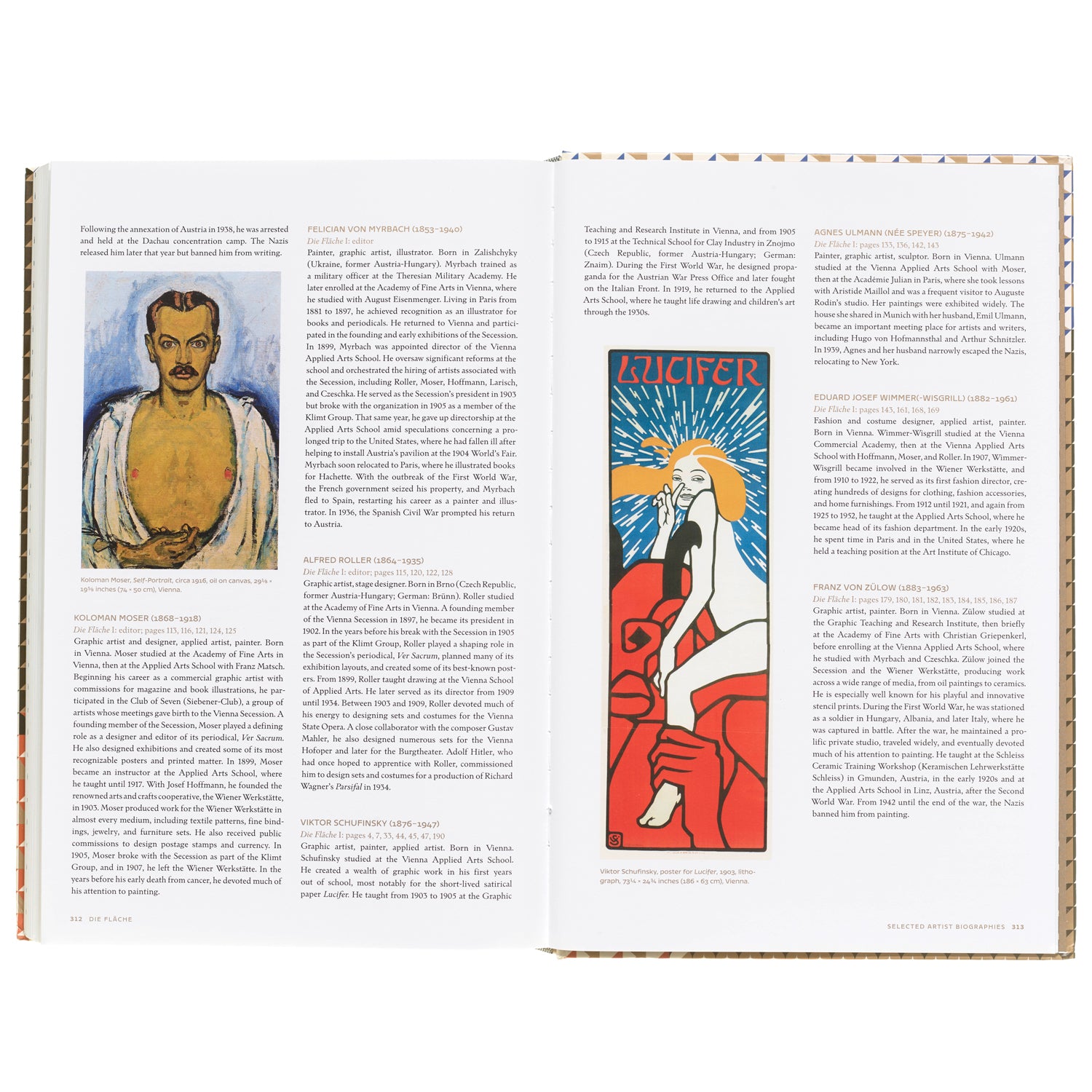Die Fläche: Design and Lettering of the Vienna Secession, 1902–1911
Die Fläche: Design and Lettering of the Vienna Secession, 1902–1911
Couldn't load pickup availability
***Ships from the UK, see note below for EU customers.***
Die Fläche: Design and Lettering of the Vienna Secession, 1902–1911 is a landmark design periodical, brought to life in a complete facsimile edition with eye-opening critical essays and translations.
Around 1900, leading Secessionists and their students developed a new style of graphic modernism, emphasizing flatness, expressive geometry, stylized lettering, and bold colors in an effort to transform the world of printed surfaces. Die Fläche (The Surface) showcased their vision, presenting hundreds of designs for everything from posters and playing cards to textiles and packaging.
This facsimile edition of Die Fläche recreates every page of the formative periodical in full color and at original size, preserving even the accordion foldouts of the second volume. In-depth essays contextualize the work, highlighting contributions by pathbreaking women, innovative lettering artists, and key practitioners of the new “surface art,” including Rudolf von Larisch, Alfred Roller, and Wiener Werkstätte founders Koloman Moser and Josef Hoffmann. With complete translations, a glossary, and selected artist biographies, this book provides unprecedented access to a major document of design history.
Published in Vienna between 1902 and 1911, Die Fläche was one of the first and most ambitious modern design periodicals. Across fourteen colorful issues featuring work by over 100 creators—around a third of them women—an explosion of design methods, teaching ideas, and visual forms heralded a break from nineteenth-century conventions. With an aim to resurface every facet of modern life—from the smallest bookmark to the urban streetscape—Die Fläche introduced a vocabulary of expressive flatness that remains powerfully with us today.
Off the beaten paths of art and design history, Die Fläche still comes as a revelation to many contemporary viewers. Because of its scarcity, even most enthusiasts of Vienna 1900 have never been able to explore its pages. This complete reproduction of Die Fläche—the first in a series of facsimiles from Letterform Archive—offers unparalleled access to this remarkable work, presenting and contextualizing it for a wide audience for the first time.
High-fidelity images of Die Fläche’s 200+ pages, all printed in full color at their original size, feature designs by legendary artists such as Gustav Klimt, Koloman Moser, and Alfred Roller, as well as many less well-known innovators. The twelve issues of volume I, published between 1902 and 1904, feature dynamic layouts that combine dazzling patterns, bold lithographic posters, playful experiments with stencils and woodcuts, and strikingly original letterforms. The two issues of volume II showcase posters from the landmark 1908 Kunstschau in four-panel accordion spreads, impressively preserved as impressive foldouts in the facsimile. Collected into a single hardcover volume, with a critical supplement and Secession-inspired cover art and chapter openers by contemporary artist Julien Priez, this elegant edition of Die Fläche makes a worthy tribute to the original.
The book opens with three in-depth and richly illustrated essays on Secessionist designers, creative letterers, and women artists who shaped Die Fläche. Art historian Diane V. Silverthorne positions it in the cultural landscape of Vienna around 1900, detailing how its editors—virtuoso designers Koloman Moser, Josef Hoffmann, Alfred Roller, Felician Myrbach, and Berthold Löffler—transformed design practice and pedagogy in pursuit of a modern “surface art.” Dan Reynolds offers the first comprehensive English-language study of Rudolf von Larisch, the twentieth century’s most influential theorist of “artistic writing” and the catalyst behind innovative Secession lettering. Megan Brandow-Faller, author of The Female Secession, shines light on Die Fläche’s many women designers, showing how a feminist idea of “unlearning” fueled transformative engagements with folk, East Asian, and children’s art, as well as new approaches to stenciling and woodcut printing.
Translations of six essays from Die Fläche vividly engage debates over modern design and its methods. Penned by cultural critic Joseph August Lux, they develop theories of poster art, lettering practice, and print design that position Die Fläche at the forefront of a cultural movement. Additional resources, including a German–English glossary of labels in Die Fläche, a complete index of artists, selected artist biographies, and issue-by-issue guides, make this an essential volume for anyone interested in the history of design and its lessons for the present.
Specifications
- Hardcover, 312 pages + 32 pages on 4 separate 4-panel concertina fold-outs
- 222 x 337 mm (8.75 x 13.25 in)
- 2.5 kg (88 oz)
- ISBN: 9781736863312
- Published 2023
Reviews
"One of the most exquisitely beautiful, expertly crafted facsimile editions I have ever held in my hands... a production masterpiece." — Steven Heller, PRINT magazine
"Die Fläche is a valuable compilation and rare testimony of the Vienna Secession’s creative glory and lasting importance... essential for designers, academics, artists, and art enthusiasts. Its publication in facsimile is a significant moment in the ever evolving process of the historiography of design.... Apart from the inspiring pages of designs, wonderful essays accompanying the facsimiles shed light on processes, facts, and personalities that played an important role for the Vienna art world and serve as a window into this bygone era, offering inspiration and deep understanding of the movement." — TypeRoom
Note for EU Customers
This book is shipped from the UK. If your country charges a local value added tax on books then you will be required to pay this locally, in addition to any administrative charges from the delivery company.
Share
